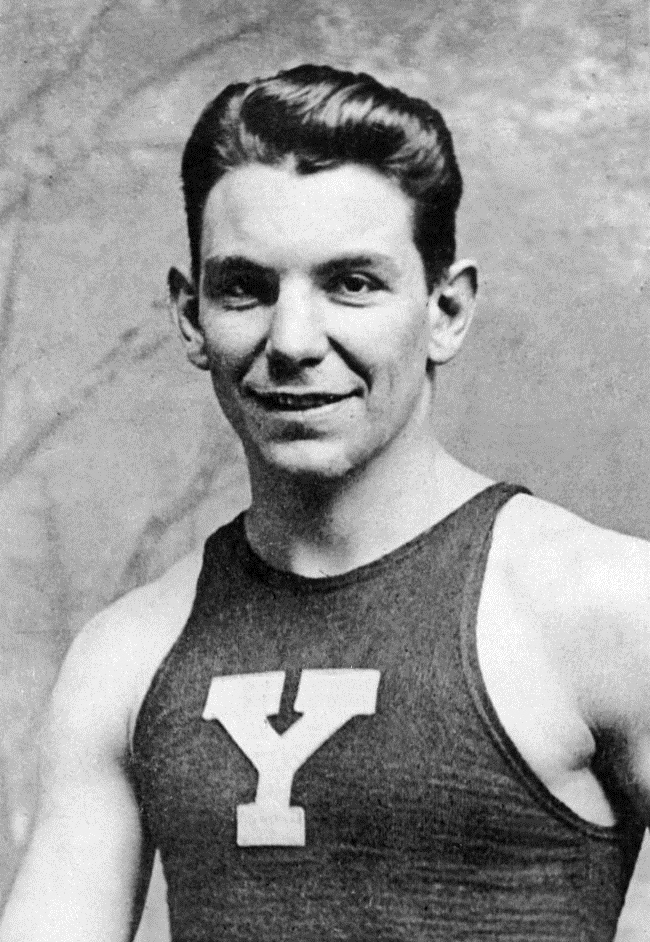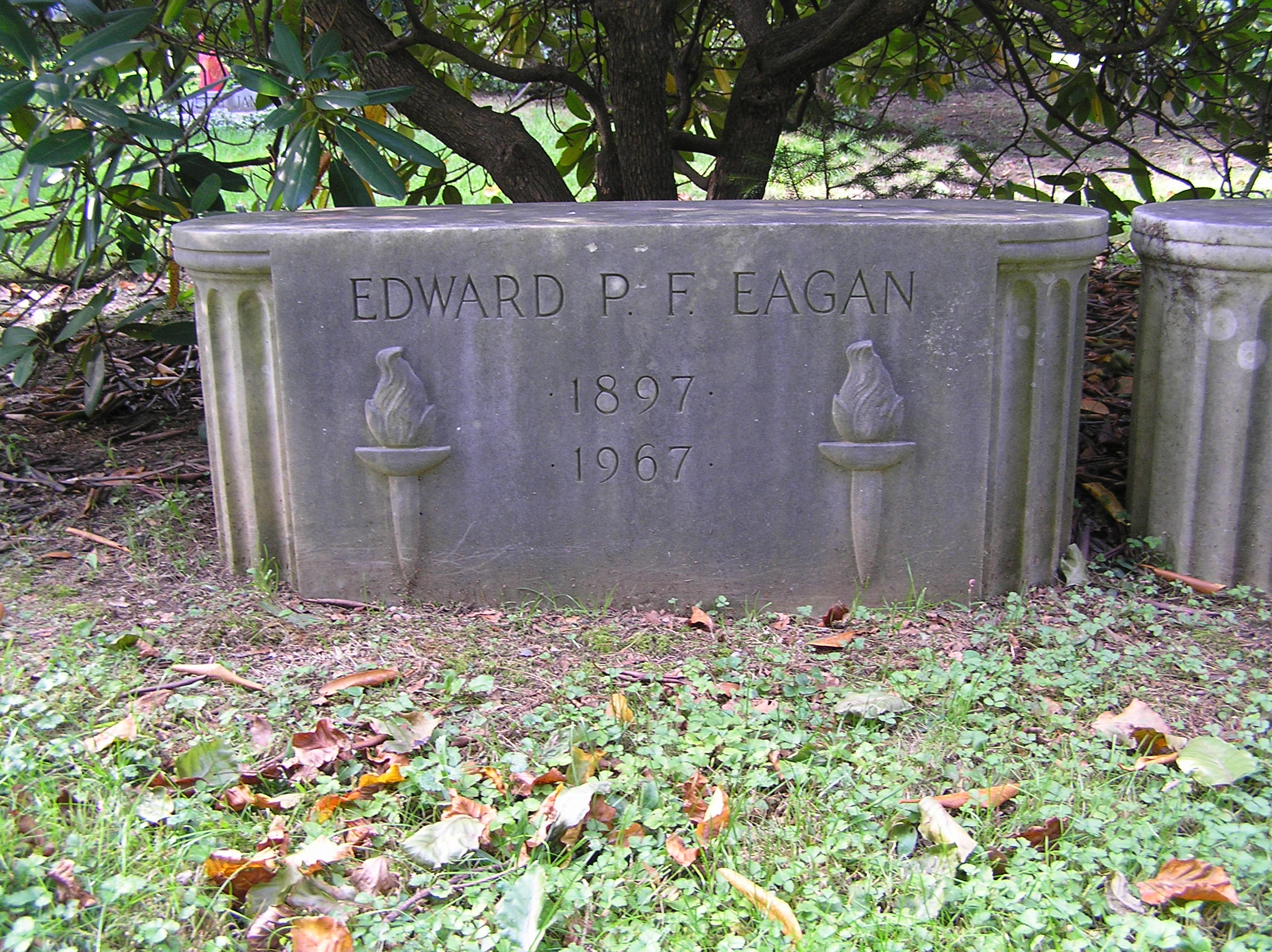1. Early Life and Education
Edward Eagan's early life was marked by humble beginnings and a dedicated pursuit of education, which laid the foundation for his diverse career.
1.1. Birth and Family Background
Edward Patrick Francis Eagan was born on April 26, 1897, in Denver, Colorado. He came from a modest family background. Tragically, his father died in a railroad accident when Eagan was just one year old. He was subsequently raised by his mother alongside his four older brothers.
1.2. Education

Eagan's academic journey was extensive and impressive. He graduated from Longmont High School before attending Denver University for one year, where he demonstrated his early boxing talent by winning the western middleweight boxing title. During World War I, he served as an artillery lieutenant and also became the middleweight champion of the American Expedition Expeditionary Forces. Following the war, Eagan continued his higher education at Yale University, graduating in 1921. His academic pursuits did not stop there; he went on to study law at Harvard Law School and the University of Oxford. Eagan notably wrote in his autobiography that he modeled his behavior after Frank Merriwell, a fictional Yale athlete from popular dime novels, stating, "To this day I have never used tobacco, because Frank Merriwell didn't. My first glass of wine, which I do not care for, was taken under social compulsion in Europe. Frank never drank."
2. Athletic Career
Eagan's athletic career was exceptional, highlighted by his historic achievements in both summer and winter Olympic sports.
2.1. Boxing Career

Eagan's boxing career saw him achieve significant success both before and during his Olympic appearances. In 1919, he won the AAU's heavyweight title. In 1920, he represented the United States as a boxer at the 1920 Summer Olympics in Antwerp, where he secured a gold medal in the light-heavyweight division. Three years later, in 1923, he further demonstrated his boxing prowess by winning the Amateur Boxing Association heavyweight title in England. Eagan also competed at the 1924 Summer Olympics in Paris, this time in the heavyweight division. However, he did not medal, losing in the first round to Arthur Clifton.
2.2. Bobsleigh Career
Eight years after his last Summer Olympic appearance, Eagan transitioned to winter sports. He returned to the Olympics as a member of the bobsleigh crew led by Billy Fiske. Their team steered to victory at the 1932 Winter Olympics in Lake Placid, earning Eagan his second Olympic gold medal in the four-man bobsled event.
2.3. Dual Olympic Gold Medalist
Edward Eagan's most notable athletic achievement is his unique status as the only athlete to win gold medals in different events at both the Summer and Winter Olympic Games. While a few athletes have medaled in both Summer and Winter Games, Eagan stands alone in winning gold in distinct disciplines. He was the first of six Olympians to medal in both the Winter and Summer Games, followed by Jacob Tullin Thams of Norway, Christa Luding-Rothenburger of East Germany, Clara Hughes of Canada, and Lauryn Williams and Eddy Alvarez of the United States. However, the distinction lies in the nature of their gold medals: Gillis Grafström also won gold in both seasons, but his only Summer Olympic gold was in figure skating, which was contested at the 1920 Summer Olympics, meaning he won in the same event. Eagan's achievement of winning gold in boxing (Summer) and bobsleigh (Winter) remains unparalleled.
3. Post-Athletic Career
Following his remarkable Olympic career, Edward Eagan embarked on successful careers in law, military service, and public administration.
3.1. Legal Career
In 1932, the same year he won his bobsleigh gold, Eagan was admitted to the New York bar, marking the beginning of his legal career in private practice. He later served for five years as an Assistant United States Attorney for the Southern District of New York.
3.2. Military Service
Eagan's commitment to his country extended to military service in two major global conflicts. During World War I, he served as an artillery lieutenant. Later, during World War II, he held the rank of lieutenant colonel in the United States Army Air Forces, specifically within the Air Transport Command. In this role, he traveled extensively, visiting nearly every location where the Army had aircraft. He retired from military service with numerous decorations.
3.3. Public Service
After World War II, Eagan was appointed to a significant public service role as the chairman of the New York State Athletic Commission. He held this position until 1951, when he resigned to dedicate his full attention to his law practice.
4. Personal Life
Beyond his professional and athletic achievements, Edward Eagan's personal life included marriage and other notable accomplishments.
4.1. Marriage and Family
In 1927, Edward Eagan married Margaret Colgate. Margaret was a member of the prominent Colgate-Palmolive family, known for their industrial legacy.
4.2. Other Achievements
In addition to his sporting and professional careers, Eagan also achieved a unique personal milestone. On December 13, 1948, he set a world record for the fastest circumnavigation of the globe by scheduled airlines. His journey covered 20.56 K mile and included stops at 18 different stations, beating the previous record by 20 hours and 15 minutes.
5. Death and Legacy
Edward Eagan's life of extraordinary achievements concluded in New York City, leaving behind a legacy as a singular figure in Olympic history.
5.1. Death
Edward Eagan passed away on June 14, 1967, at the age of 70, in New York City. He was interred at Greenwood Union Cemetery in Rye, New York.

5.2. Legacy
Eagan's most enduring legacy is his unparalleled achievement as the only athlete to win gold medals in different events at both the Summer and Winter Olympic Games. This unique feat solidifies his place in sports history, making him a symbol of versatility and sustained excellence across diverse athletic disciplines. His life story, encompassing athletic glory, legal career, and military service, continues to be remembered for its breadth of accomplishment.